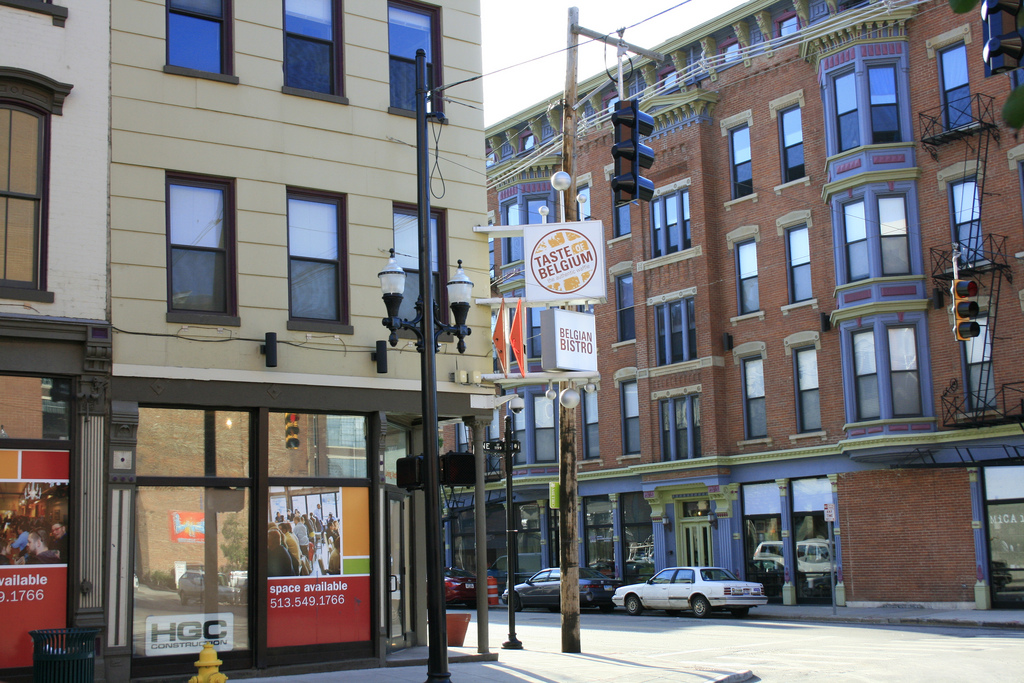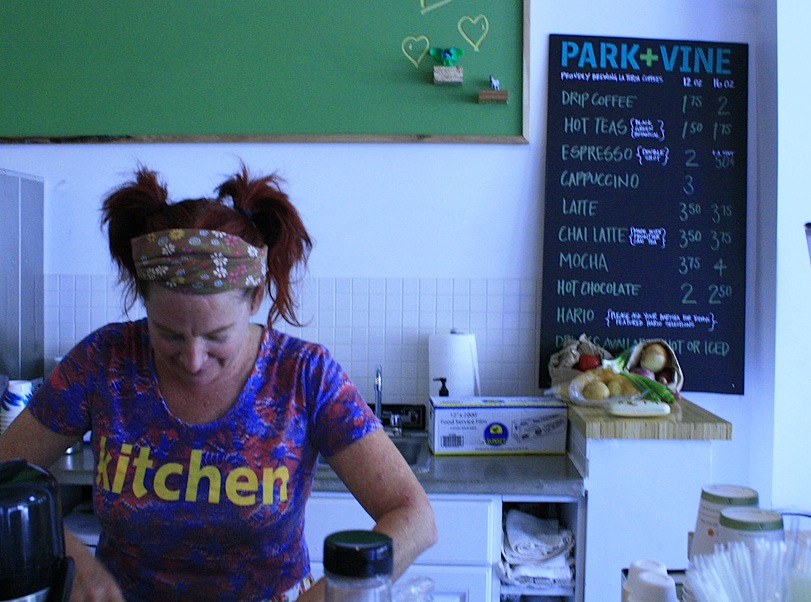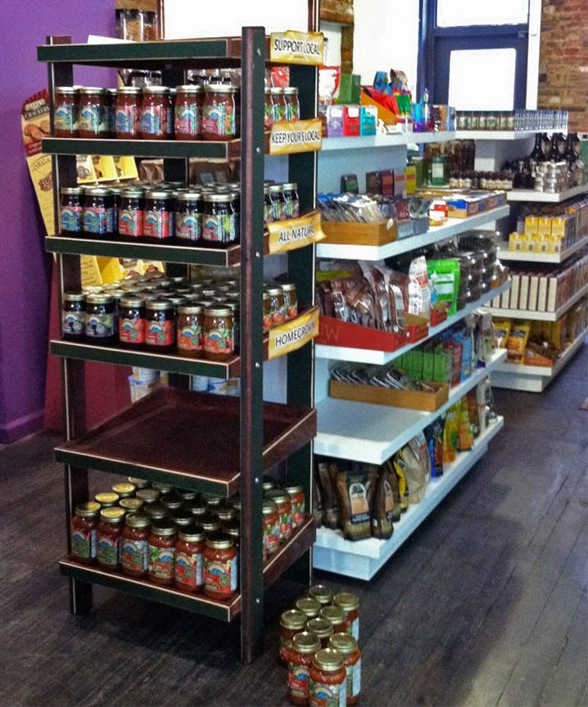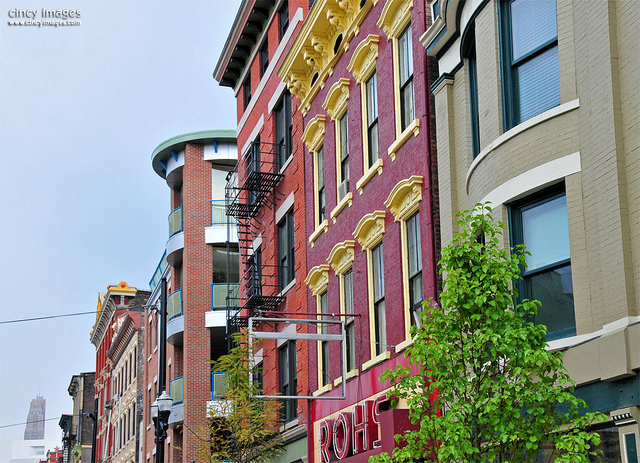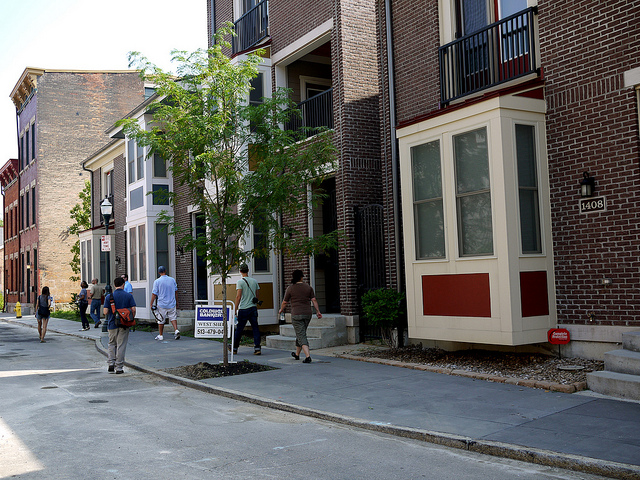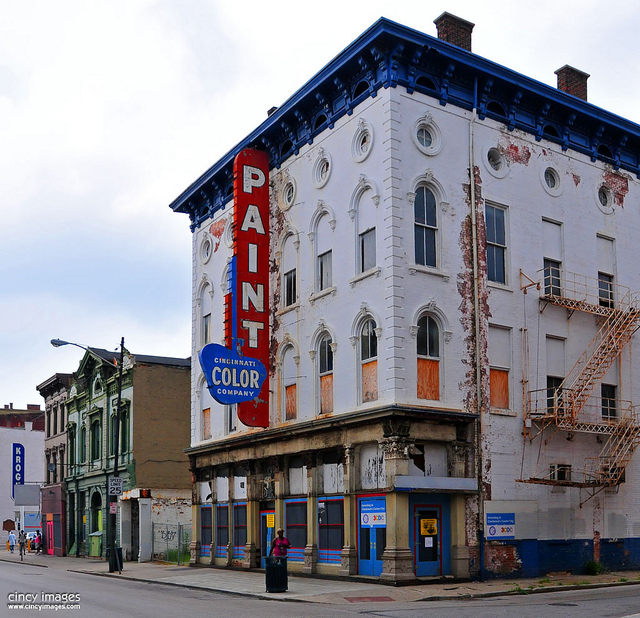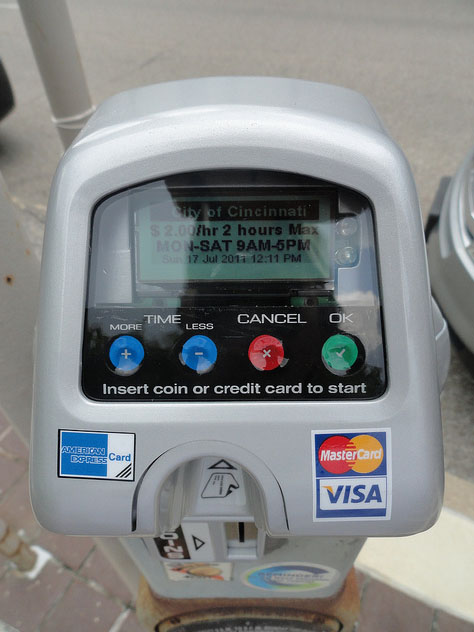 In 2007, Jean-Francois Flechet was making his dense, sugary waffles in Jean Robert de Cavel’s kitchen. Four years later he is preparing to take over one of the largest retail spaces in the Gateway Quarter of Over-the-Rhine, with a flagship store that marks the first Belgian bistro in the Cincinnati area for quite some time.
In 2007, Jean-Francois Flechet was making his dense, sugary waffles in Jean Robert de Cavel’s kitchen. Four years later he is preparing to take over one of the largest retail spaces in the Gateway Quarter of Over-the-Rhine, with a flagship store that marks the first Belgian bistro in the Cincinnati area for quite some time.
The Taste of Belgium Bistro will, fingers crossed, be open for business by then end of this month. Located at the corner of 12th and Vine Streets in the former Gateway Quarter leasing office, Flechet has been very busy preparing the space, leased for 5 years, for his customers.
Initially, the bistro will be open Monday through Friday, 7am to 4pm, serving up breakfast and lunch. The brand is already well known for their pastries, macarons, buckwheat crepes, and of course their waffles. All of these and more will be available for purchase.
The goal is to be open seven days a week into the evenings, and serve up authentic Belgian fare and beer for a laid back, comfortable, dinner and drinking experience. “Belgian food is similar to French food,” explains Jean-Francois. “except we cook with beer instead of wine – appropriate for Cincinnati!” General manager and chef Mark Gould has been running operations at Findlay Market for over two years, and was the natural choice for head chef at the new bistro.
Expect traditional Belgian treats like mussels and a variety of frites – both vegan and regular- for the new dinner menu, as well as special dishes like carbonnades flamandes – a version of beef burgundy, made with Belgian ale instead of French wine. There will also be appetizer, entree and dessert variations on the famous waffle – Chicken and waffles? A la mode? We’ll have to wait and find out. There will be several varieties of Belgian brews to try, with an array of glasses complementing each one.
Flechet and his staff have taken the shell of the 2600 square foot space and utilized it to its full potential. There will be seating for around 60, inside and out, and the kitchen and prep space is spacious for their needs. A ten foot by fifteen foot baker’s table with an exquisite antique chandelier commands the majority of the kitchen area, and will be the chef’s table for special dining events later on. Walnut and brushed aluminum make up the counter tops, and the original flooring and tin ceiling in the space have been preserved.
Most of all, Jean-Francois hopes to establish his commissary at the new location. Space adjacent to the new bistro has been rented as the official Taste of Belgium headquarters and office, and a majority of baking and prep for catering and the Findlay Market location will occur in the new space.
“We’re excited to be opening in such a noticeable location,” says Flechet. “With our Findlay Market roots, we wanted to stay in Over-the-Rhine. The neighborhood is growing, and it has more personality than other places.”
Check out the exclusive pictures of the new Taste of Belgium Bistro!
Pictures by Jenny Kessler for UrbanCincy
